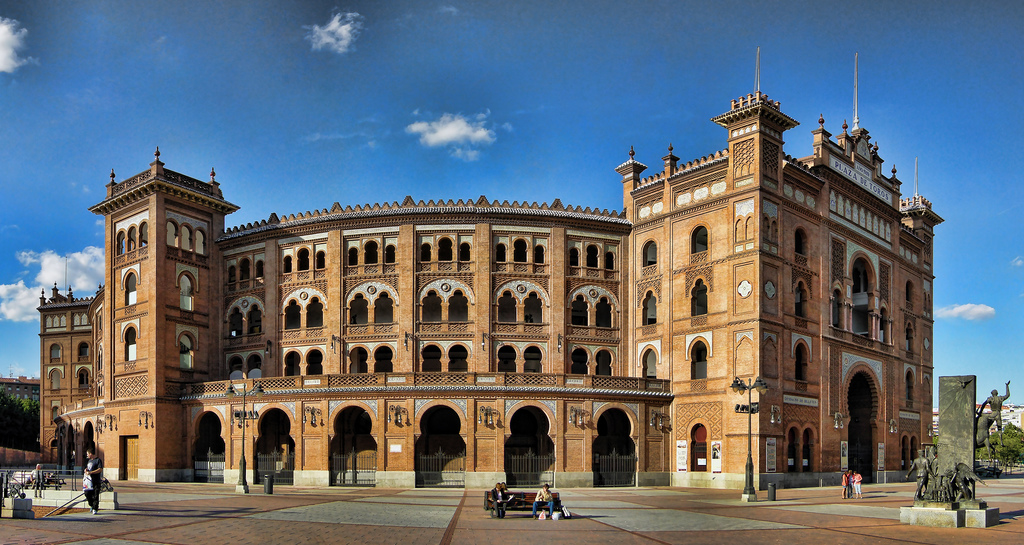When visiting Madrid, the bustling and historic capital city of Spain, there are literally hundreds of things to do and see, so many, in fact, that’s it’s impossible to see everything during the course of a single stay. However, if your goal is to explore and truly soak up the culture and traditions of this fine city, you simply must put the Plaza de Toros on your touring itinerary. To illustrate why this is such an important stop along the tour trail, below we provide some helpful and informative facts regarding the Plaza de Toros, including its location, history and unique characteristics.
Plaza de Toros
Bullfighting is one of the most lasting traditions of Spain and an integral component of the country’s culture, and the Plaza de Toros, or bullfighting ring, is home to some of the most exciting bullfight events in Spain and one of the most renowned bullfighting plazas in the entire world. Also known as Plaza de Toros de Las Ventas, this massive bullfighting ring is located in the Guindalera quarter of Madrid’s Salamanca district, just northeast of the city’s center. It was designed by famed architect José Espeliú, who engaged a Neo-Mudéjar style when designing it, a style popularized by the Arabic Moors of the 12th century. This gives the structure a very ancient look, although it was built long after that period.
The construction of the Plaza de Toros commenced some 90 years ago, in the spring of 1922. It was built not only to replace the former Madrid bullfighting ring—the Carretera de Aragon, constructed in 1874—but to create a more modern setting for these types of events while still retaining an ancient old-world feel. In total, the project cost 12 million pesetas to build—one-third more than anticipated—and although the plaza was completed in 1929 it wasn’t until June of 1931 that it was finally inaugurated. Following the 1931 inauguration, the Plaza de Toros was almost immediately closed again so as to implement some very important and necessary improvements. It would not open again until October of 1934. It was also shut down during the Spanish Civil War (1936-1939), opening again in May of 1939.
The very first bull to come barreling onto the floor at the Plaza de Toros was named Hortelano, and he was faced by the renowned Spanish bullfighter, Aguililla. Thousands of fans gathered for this spectacle, yelling shouts of encouragement and singing to the inaugural music of the event, “España cañi, the pasadoble,” by Madrid’s Municipal Band.
Tourists planning to visit the Plaza de Toros should know the arena is the third-largest bullfighting ring in the world, following the Plaza de Toros in Mexico City, Mexico and the Plaza de Toros Monumental de Valencia in Venezuela. Naturally, the Plaza de Toros is the largest bullring in Spain, measuring 60 meters in diameter, and can hold up to 25,000 people for a single event.
While bullfighting takes place in the Plaza de Toros from March through October, the best time to visit this attraction is between May and June, during the San Isidro Festival, a city-wide party honoring the city’s patron saint. This is unquestionably the most celebrated bullfighting festival in the world, with daily bullfighting events for three straight weeks. Fights typically begin at the Plaza de Toros between 7:00 pm and 8:00 pm and can span anywhere from two to three hours in duration. Due to the popularity of this festival, tickets may be hard to come by, so it’s best to plan ahead and buy your bullfighting tickets online as part of an overall package. Many of these packages also offer a guided tour of the Plaza de Toros, which will give you sufficient time in which to explore the wonderful detail of the architecture, both inside and outside the arena.



